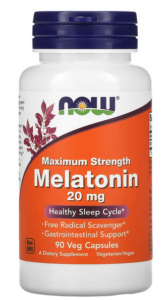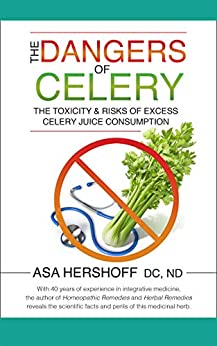Food Allergy Testing
The term “allergy” is often misleading. A lay person usually thinks of an allergy as an abnormal response to a food or substance that is well tolerated by most people. The medical definition, is an immune system response mediated by immunoglobulins.
Therefore, if you are having an adverse reaction to a food, for any reason other than immunoglobulins, it is not an “allergy.”
IgE Allergies
Usually allergists have looked for an immediate reaction to an allergen, such as tongue swelling, hives, or itching after eating a specific food. These symptoms indicate an IgE mediated immunoglobulin reaction.
Allergists typically test for IgE allergies with skin prick tests. Sometimes they run blood tests. These methods are excellent ways to uncover IgE mediated allergic responses. Unfortunately there are many other ways an offending food may cause symptoms. Nonetheless, for decades, allergists have been telling patients they are not allergic because they don’t have an IgE reaction against certain foods.
This is misleading. What patients want to know is not if they have an IgE mediated immune system response. They want to know what foods they are reacting to.
IgG Allergies
In holistic health, practitioners are taught that such tests miss many allergies. We are trained to look for delayed allergic reactions, such as eating an offending food followed by a headache the next day. These delayed food allergies are IgG mediated immunoglobulin reactions.
One of the most popular ways holistic practitioners test patients for food allergies is with blood tests against IgG antibodies. At times, these tests do help. But they are only testing for one type of food reaction. It is not uncommon for patients to spend hundreds of dollars on such food allergy panels just to see:
- Almost no foods come up positive, which doesn’t help.
- Conversely, it seems that half the panel comes up positive, which demonstrates a “leaky gut.” This however does not indicate which are the primary foods to avoid.
- The foods they most commonly eat are positive, which is caused by repeated exposure of the immune system to that food. This thought, does not indicate if this food is the primary problem.
Although these tests can be useful in some cases, more often than not they don’t show anything significantly new, or particularly helpful.
The one exception I have seen to this is the client who has been eating a lot of gluten or dairy and doesn’t believe it is a problem. Blood tests for food allergies are a good way to prove to certain patients that they must avoid their favorite foods.
The Problem With Food Allergy Testing
Food allergies are only type of adverse reaction someone may be having against a particular food. What you need to know is not what foods allergies you have. Rather its what foods you are reacting to, regardless of underlining mechanism.
A food intolerance is a less specific terms which indicates that a food is adversely effecting health, regardless of the underlining mechanism.
Causes of food intolerances include:
- Hypoglycemic reactions, usually to sugars and other carbohydrates.
- Histamine reactions.
- Deficiency in enzymes needed to digest particular foods, such as lactose intolerance, frutose intolerance and sensitivity to dietary amines.
- Reaction to lectins, such as wheat lectins contributing to rheumatoid arthritis.
- Neurotoxic substances such as glutamate.
- Salicylate reactions.
- Any other adverse reaction an individual may have to a particular food that is not currently known.
So, we can see that food allergy tests only look for one of many adverse food reactions someone may have.
A lab test may be technically right that you don’t have an “allergy” to a specific food, but at the same time it could totally miss another reason why you still have a lack of tolerance against the same food.
As far as skin prick tests, or IgE blood tests, I recommend those be used for seasonal allergies. If an IgE reaction is found for a food, then avoid that food. This is the best way to test for immediate IgE food reactions. But you can’t say a food is safe to eat, just because you don’t have an IgE reaction!
Allergy Elimination Diets
Allergy elimination diets are often taught as the best way to uncover food reactions. To do an allergy elimination diet, the patient eats a diet consisting of typically only non allergenic foods for a month or two. Then one by one, foods are reintroduced. Each day the patient charts off any symptoms they may have to uncover reactions.
This method is not practical for the real world because:
- It can take months to properly do this.
- Through experience I discovered that virtually no one complies with doing a proper allergy elimination / reintroduction protocol.
- There many be typically non-allergenic foods the patient is reacting to.
- The patient is unwittingly being exposed to foods which they think they are eliminating due to the large amounts of food additives.
- Properly tracking symptom reactions each time a food is reintroduced into the diet takes meticulous work, which most patients do not have the time or energy to do.
In summation, the practitioner’s job is to identify foods which is important for their patient to avoid, not to give a nearly impossible job that involves a months long food homework assignment.
Applied Kinesiology Testing
I have been doing kinesiology muscle testing for 13 years now. It can help to uncover food reactions. However, in my experience it is often too sensitive. Testing weak against a food on a muscle test may mean you should never eat the food at all. It may also mean that it wont’ digest well with your last meal and you should not eat it right now. Or perhaps you have been eating too much of something and should not eat it for a week or two.
It is very common for people to test weak against some foods on one visit, and then weak against other foods on another visit.
If a food tests weak repeatedly on every visit, then it becomes more likely that it is a foundation problem that should be avoided all the time.
Ultimately there is just a lot of noise that can come up with muscle testing. It can be a useful tool when used well. But it can not be used to quickly identify a foundational food intolerance.
Carroll Food Intolerance Test
This is a long time used, traditional naturopathic technique for uncovering food intolerance. This is not a food allergy test. So if you have had food allergy testing done in the past, this results are probably different.
I have brought this method into my practice for several reasons:
- There is a track record of it being used with great results by naturopathic doctors for 90 years.
- It a way to discover foundational food intolerances.
- Unlike the muscle testing I also do, the Carroll Food Intolerance Test eliminates much of the noise to uncover the most important foods to eliminate.
- Helps to identify hidden sources of foods that may be a problem. Many processed foods have additives which can be hidden sources of exposure to offending foods.


